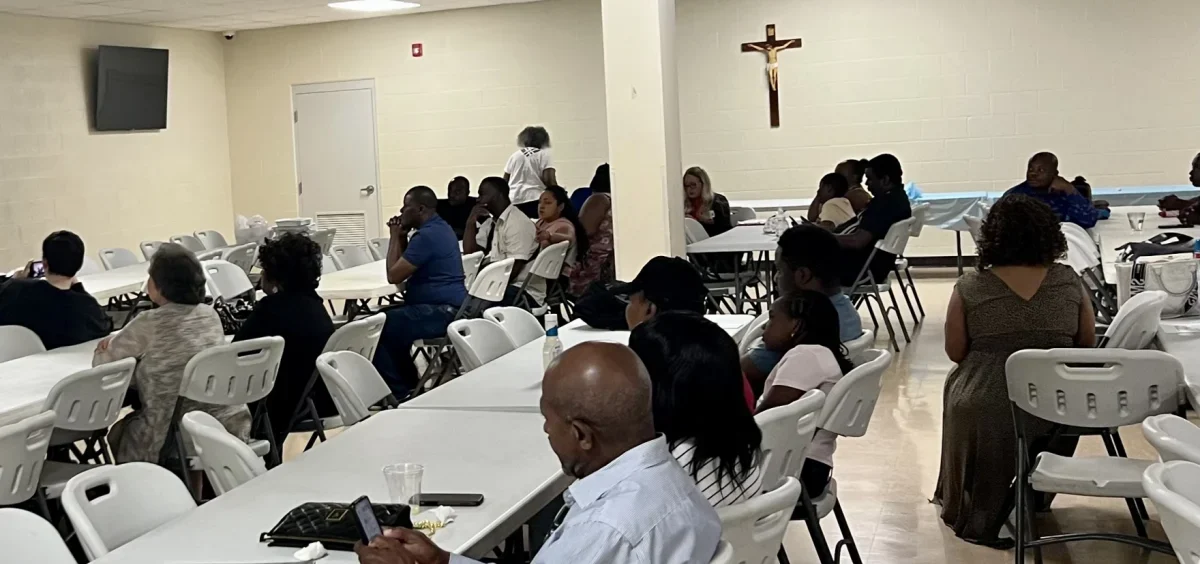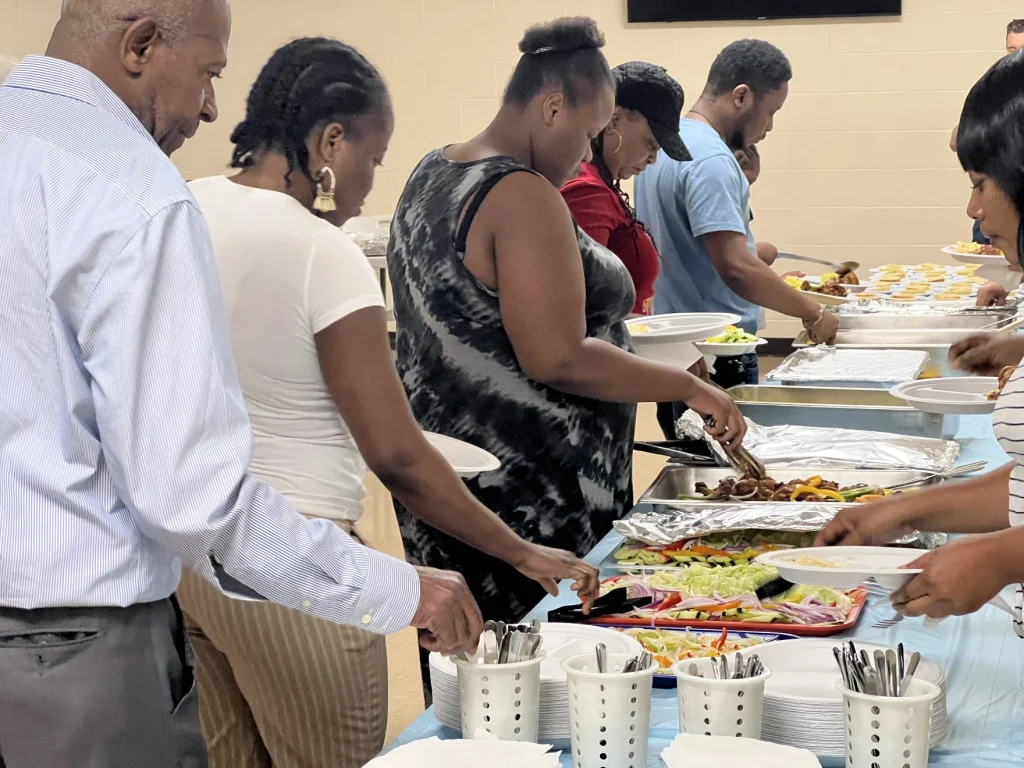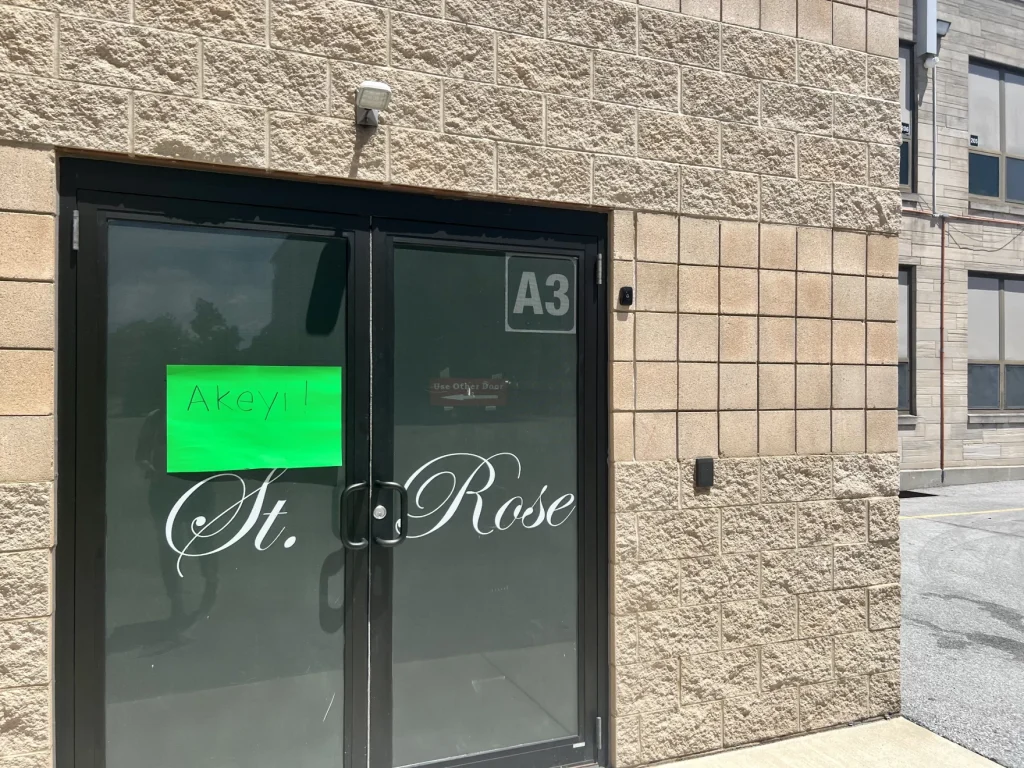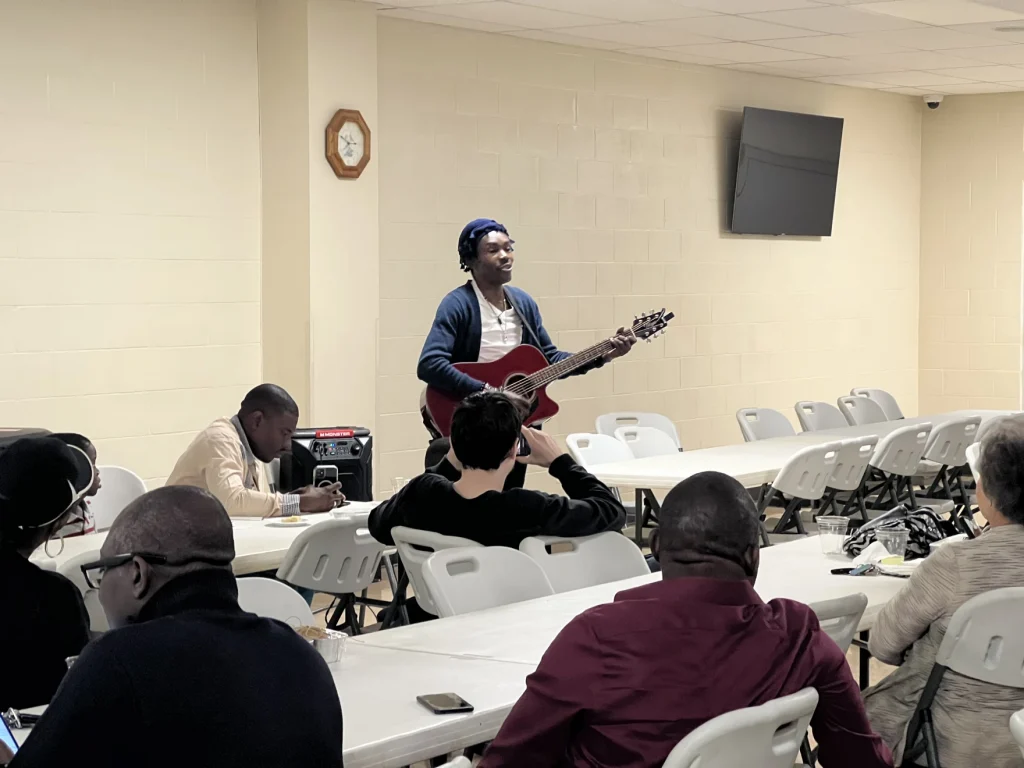News

In the absence of immigrant services, churches welcome Haitians to small town Ohio
By: Kendall Crawford | The Ohio Newsroom
Posted on:
LIMA, Ohio (The Ohio Newsroom) — Lunch at St. Rose community center begins the same way every meal at the parish does: with a prayer. Except on this summer Sunday, each line is echoed in Haitian Creole.
When the prayer ends, a crowd of newcomers begins heaping their plates with traditional Haitian food. They sit and enjoy rice and beans and fried plantains as speakers come up and share how to get a library card, sign up for English classes and enroll in college courses.
Julia Joseph moved to Lima last year, fleeing political turmoil and violence in Haiti with her family. She wants to study to be a nurse and help young people.
“I want to buy a house in Lima, live in Lima,” Joseph said.

The Ohio Newsroom]
But, in these smaller Ohio communities, a lack of immigrant services means it’s up to local nonprofits and churches, like St. Rose, to handle an influx of new Americans.
A sudden surge in the need for immigrant services
Ohio’s surplus of manufacturing jobs and relatively low cost of living didn’t just attract Joseph and her family. Around 2,000 Haitian people are estimated to have come to Lima in the last year.
That’s a big jump for a city of 35,000 people, said Beth Keehn, with the local Mercy Health hospital. She noticed the surge last fall, when more patients began requesting Haitian Creole interpreters.
“It was pretty clear that something was changing in Lima, Ohio,” Keehn said.

Young families are coming into a community that hasn’t seen much population growth in decades. And the Haitian arrivals need more than just translators, Keehn said. Finding housing, navigating the transportation system and applying for work permits are all challenges for the newcomers. But, Keehn said, Lima doesn’t have a resettlement agency office, like bigger cities in Ohio do.
“[Big cities] have an established kind of resource where if people are having trouble, you could ask them to contact that agency and they would talk them through the process,” Keehn said. “That doesn’t exist here.”
So she sprung into action and helped form a coalition of churches and nonprofits to meet these needs. She said they want to connect Haitian people to the resources they need to begin their lives in Lima.
Community backlash is fueled by future concerns and misinformation
And while Keehn said the local service agencies are happy to help the new community get on their feet, Lima councilman Derry Glenn said some in the wider community are scared.
“[There’s] a lot of lies out there,” said Glenn, representative of the city’s 6th ward.
Glenn heard a lot of false rumors about rising crime rates and the number of migrants on food stamps. In response, he held a forum to try to debunk some of these myths and to address community members’ concerns, like John Carl’s. The Lima resident worries if the population continues to grow, the small city won’t have the infrastructure to support it.
“I know currently Lima is not at capacity when it comes to people, when it comes to our food and it comes to electricity and water. But I mean, look how quick it got out of control in all the other states,” Carl said.
Glenn acknowledges this fear, but said, for now, the city has enough resources for the immigrants who have moved there.
“We are doing the right thing in our city for everybody,” Glenn said. “That’s all we can do.”
A changing community takes shape
These same contentious conversations are taking place in other Ohio cities. Findlay recently formed an immigration task force to examine challenges from increased immigration. In Springfield, city officials are calling for federal aid to support their rapid population increases from immigration.
Keehn said while many of the community members’ concerns around resources may be legitimate, the Haitian people are already a part of the Lima community. They need to be cared for as any other neighbor would be.
“In the absence of a perfect answer, let’s err on the side of humanity,” Keehn said.

At the end of today’s meal, a young Haitian man takes the center of the room, strums his guitar and encourages the room to sing with him. The songs alternate between English and Haitian Creole.
Regardless of which language they’re sung in, each hymn brings the room together in applause. Keehn hopes the wider community can come together in the same way.

